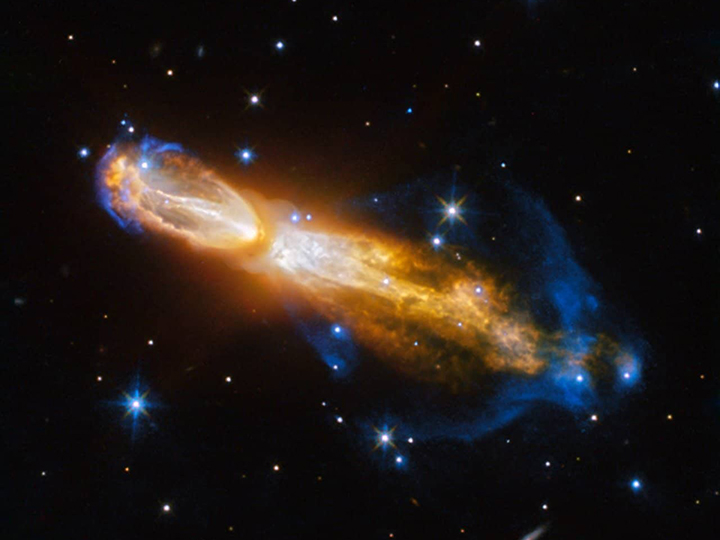
Huarte Espinosa co-authored a paper published by the Monthly Notices of The Royal Astronomical Society (MNRAS). Read on to learn about a calabash-shaped nebulae (the calabash is a fruit with a bottle-like shape), the death of stars and what encouraged him to go into astronomy.
- The paper was concerning a nebula, named OH 231.8+4.2. How did it get that clunky name, and what exactly does that mean?
Huarte Espinosa: OH 231.8+4.2 is the technical name of a very beautiful nebula. Astronomers are famous for giving ugly technical names, but they hold onto the information on the telescopes and research groups that catalogued these nebulae. The prettier name for this nebula is the ‘Calabash Nebula’ due to its shape. This giant calabash is located some 5,000 light years from Earth , and it’s 1.4 light years long; this is about 900 times longer than our solar system!
-
What was the paper concerning?
MHE: In this paper, we obtained new data (polarization) using the brand-new observatory ‘The Atacama Large Millimeter Array’ located in Chile. We observed the shape of the magnetic fields inside this nebula and compared them with the magnetic fields inside a large supercomputer simulation I did some years ago. The objective was to explain in detail how this nebula expanded to have such a controversial Calabash shape. - When did you first realize you wanted to go into the field of astrophysics?
MHE: I was always mesmerized by the night sky, and images of space and planets in movies. The moment I went from “it’s cool” to asking specific questions was around 1995 while reading a small pocketbook about the solar system. All stars, our Sun included of course, have lives. They are born in different parts of our Galaxy, they grow up, they have long and lasting, very different, lives. And finally, they all die -- some of them spectacularly. - What is the most challenging aspect of your research?
MHE: Coming up with creative new ideas to prove that our new methods and results are consistent with the literature, because there are no previous studies which we can use to do an ‘apples to apples’ comparison. - Can you give an example of a new method you are pioneering?
MHE: My colleagues and I are creating the very first ‘simulated observations’ of my simulated nebula’s magnetic fields. I’m using the word simulated twice here, because the idea is to utilize the data of a simulated nebula, and then do all the math to simulate that this data is located thousands of astronomical units away from us, and it shines light which we capture with telescopes on Earth. This requires a mix of physics and simulated instruments’ calculations. The results are images that we can use to compare, “apples to apples,” with the telescopes’ data. - What motivates you? At work? Outside of work?
MHE: Working on Data Science, AI and supercomputing at an Institute that has great resources is always interesting. I enjoy learning about the research and education projects that we support and solving technical problems.
Outside of work, it’s tricky now that we cannot travel or go out to cultural events, but I enjoy playing tennis with my wife and fantasizing about what we will do once we can go out again. (Plus…chocolate!) - Lastly, a fun question, since I promised “stargazing” in the title of this piece: What’s your favorite constellation?
MHE: That’s an easy one! The Orion constellation, because it has a lovely nebula right where the sword appears to be. The whole frame of the hunter is composed of stars of very different ages and sizes.